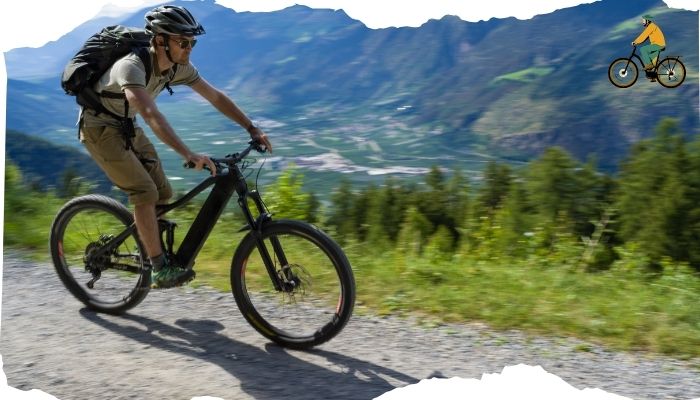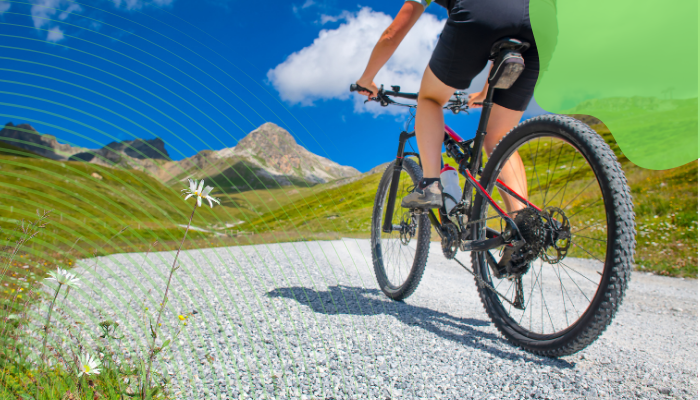How to Choose the Right eBike for Mountain Adventures
Choosing the right eBike for mountain biking is essential for an enjoyable and safe adventure. With the rise of electric bikes, enthusiasts have a myriad of options to consider, making it crucial to understand what features to look for. This guide will walk you through the key aspects of selecting the perfect eBike for your mountain trails.
Intro
Mountain biking with an eBike opens up new possibilities for both seasoned riders and beginners. The right eBike can make challenging terrains accessible and enhance the overall biking experience. However, with so many models and specifications available, it can be daunting to make the right choice. This comprehensive guide will help you navigate through the essential factors to consider when choosing the right eBike for mountain biking.

Understanding Mountain eBikes
Mountain eBikes are designed to handle rough terrains, steep climbs, and descents. They come equipped with powerful motors, robust frames, and advanced suspension systems. Understanding the core components of a mountain eBike is the first step in making an informed decision.
Choose the right eBike for mountain (Motor and Battery): The Heart of the eBike
The motor and battery are critical components that determine the performance and range of your eBike. For mountain biking, a mid-drive motor is often preferred due to its balanced weight distribution and efficient power delivery. Look for motors with high torque, as this will help you tackle steep inclines effortlessly.
When it comes to batteries, consider the capacity (measured in watt-hours). A higher capacity battery will offer a longer range, which is crucial for extended mountain rides. Additionally, ensure the battery is well-protected against shocks and vibrations that are common in mountain biking.
Frame Design: Durability and Comfort
The frame of the eBike needs to be sturdy and durable to withstand the rigors of mountain trails. Aluminum and carbon fiber are popular choices due to their strength and lightweight properties. A well-designed frame should also provide comfort, allowing you to ride for hours without fatigue.
Suspension System: Smooth Rides on Rough Trails
A good suspension system is essential for mountain biking. Full-suspension eBikes, with both front and rear shocks, offer the best performance on rough terrains. They absorb impacts and provide a smoother ride, reducing strain on your body. Look for adjustable suspension systems that can be tuned according to the trail conditions and your riding style.
Tire Selection: Grip and Stability
Tires play a crucial role in the performance of a mountain eBike. Wider tires with aggressive tread patterns provide better grip and stability on loose and uneven surfaces. Tubeless tires are also a great option as they allow for lower tire pressure, improving traction and reducing the risk of punctures.
Brakes: Control and Safety
Reliable braking is vital for mountain biking. Hydraulic disc brakes are highly recommended as they offer superior stopping power and better control, especially on steep descents. Ensure the brakes are well-maintained and capable of handling the demands of mountain trails.
Additional Features: Enhancing Your Ride
Modern eBikes come with various additional features that can enhance your mountain biking experience. These may include integrated lights, advanced display units, GPS tracking, and connectivity options. While these features are not essential, they can add convenience and improve your overall experience.
Budget Considerations
Mountain eBikes can vary significantly in price, from a few thousand dollars to over ten thousand. It’s important to set a budget and find a model that offers the best value for your money. Consider the long-term benefits and potential maintenance costs when making your decision.
Test Rides and Reviews
Before making a final decision, take the time to test ride different models. This will give you a feel for the bike’s performance and comfort. Additionally, read reviews and seek recommendations from fellow mountain bikers to gain insights into the reliability and performance of various eBikes.
Maintenance and Support
Choose an eBike from a reputable manufacturer that offers good customer support and warranty. Regular maintenance is crucial for the longevity of your eBike, so ensure you have access to service centers or mechanics familiar with eBike technology.
Sustainability and Eco-Friendliness
Electric bikes are generally more environmentally friendly than traditional gasoline-powered vehicles. When choosing an eBike, consider models with sustainable materials and those that are energy-efficient. This not only reduces your carbon footprint but also supports the growing movement towards eco-friendly transportation.
Future-Proofing Your Purchase
Technology in the eBike industry is rapidly evolving. To ensure your investment remains valuable, look for models that offer upgradability. This includes the ability to replace or upgrade components such as the motor, battery, and firmware.
Choose the Right eBike for mountain FAQs
What is the best motor type for a mountain eBike?
A mid-drive motor is generally the best option for mountain eBikes due to its efficient power delivery and balanced weight distribution.
How important is battery capacity for mountain biking?
Battery capacity is crucial as it determines the range of your eBike. For mountain biking, a higher capacity battery is recommended to ensure you have enough power for long rides.
Should I choose a full-suspension or hardtail eBike for mountain biking?
Full-suspension eBikes offer better performance on rough and uneven terrains, making them ideal for mountain biking. However, if you are on a budget, a hardtail eBike can also be a good choice for less challenging trails.
What tire width is best for mountain eBikes?
Wider tires, typically 2.6 inches or more, provide better grip and stability on mountain trails. They offer improved traction and are less prone to punctures.
How often should I maintain my mountain eBike?
Regular maintenance is crucial for the longevity and performance of your eBike. It is recommended to have it serviced every few months, especially if you ride frequently on challenging terrains.
Can I upgrade my eBike in the future?
Many eBikes offer upgradability options for components such as the motor, battery, and firmware. Choosing a model with these options can future-proof your investment.
Conclusion
Choosing the right eBike for mountain biking involves careful consideration of various factors, including the motor, battery, frame design, suspension, tires, and brakes. By understanding these components and their impact on your riding experience, you can make an informed decision that will enhance your mountain biking adventures. Remember to set a budget, test ride different models, and seek recommendations to find the perfect eBike for your needs. Happy trails!









